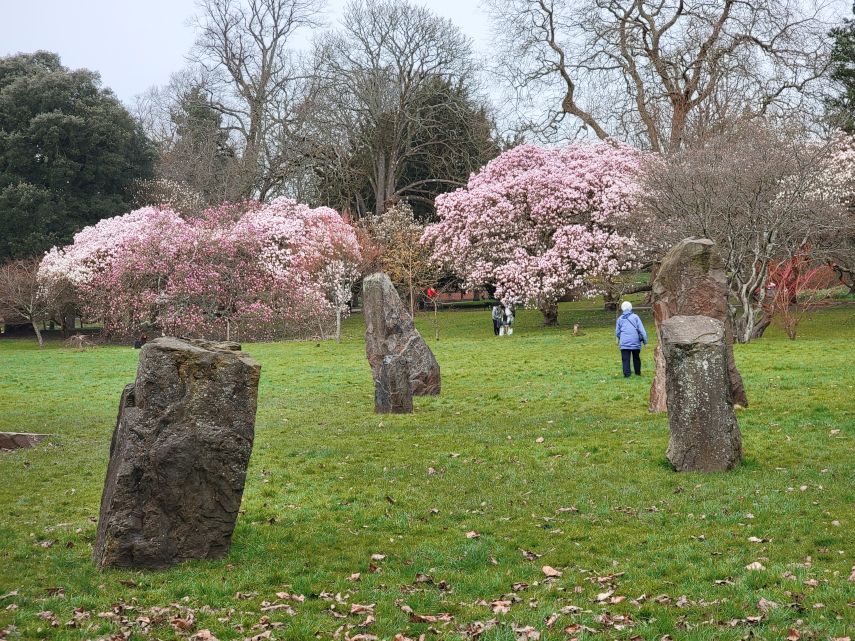
 DoneThat
DoneThat
Cardiff (1), Glamorgan.

The 12-sided Norman Keep within Cardiff Castle is known as a "shell" keep because its outer walls provided a shell for smaller buildings within.
The water in the foreground is part of the circular moat which surrounds the keep.
It is possible to climb to the top of the keep giving views across the city.
| Comment |


Cardiff, Glamorgan.
This is the Victorian Gothic Revival part of Cardiff Castle.
Ownership of the castle passed to the Marquis of Bute in 1766 and in 1866 the 3rd Marquis of Bute built this part of the castle with extraordinarily lavish rooms.
| Comment | More of Cardiff Castle |

Castell Coch or the Red Castle lies on the northern edge of Cardiff in the village of Tongwynlais and is easily reached by bus or car (they have their own car park).
There was a 13th century castle here which was then modified by the Marquess of Bute during the Victorian era in the Gothic Revival style. He engaged William Burges as his architect and the result is amazing.
| Comment | More of Castell Coch |

Cardiff is known for its Victorian and Edwardian Shopping Arcades of which there are six in total.
Duke Street Arcade opened in 1902 and is a Grade II Listed building. Duke Street Arcade joins High Street arcade, and is just opposite Cardiff Castle, in the Castle Quarter.
Cardiff's Arcades house a wide range of shops and cafes.
| Comment | More of the Arcades |

The National Museum, Cardiff.
The National Museum of Wales was founded in 1905, with its royal charter granted in 1907. Construction of a new building in the civic complex of Cathays Park began in 1912, but owing to the First World War it did not open to the public until 1922, with the official opening taking place in 1927.
This museum has two distinct parts; Geology/Botany/Zoology (The story of Life from the very beginning to the present day) and Art.| Comment | More of the National Museum |

Bute Park, Cardiff.
Bute Park comprises 130 acres of landscaped gardens and parkland that once formed the grounds of Cardiff Castle. The park is named after the 3rd Marquess of Bute, whose family owned the castle.
This Stone Circle might look like an ancient monument but it was actually installed in 1978 to celebrate Cardiff hosting the Welsh National Eisteddfod. When we were there in March we were fortunate to see these magnificant Magnolia Trees in bloom.
| Comment | More of Bute Park |

Roath Park, Cardiff.
Roath Park opened in 1894 and was one of the first public parks in Cardiff and still retains its classic Victorian atmosphere.
The park was built over 20 years on 130 acres of reclaimed bog and the lake itself covers 30 acres.
| Comment | More of Roath Park |

Cardiff Bay, Cardiff.
Cardiff Bay, historically 'Tiger Bay', is an area and freshwater lake which is the site of a former tidal bay and estuary. It serves as the river mouth of the Rivers Taff and Ely and was converted into a 500 acre lake as part of a UK Government redevelopment project. The barrage, on its seaward side, impounds the rivers from the Severn Estuary, providing flood defence and the creation of a permanent non-tidal high water lake with limited access to the sea.
| Comment | More of Cardiff Bay |

Llandaff Cathedral, Llandaff, Cardiff.
The current building is partly 12th century and partly from the 17th century when severe damage, resulting from the rebellion of Owain Glyndwr and later from the English Civil War, was repaired. The original cathedral was built on the site of an earlier church. During the Cardiff Blitz of the Second World War the cathedral was severely damaged when a parachute mine was dropped blowing the roof off the nave, south aisle and chapter house. The work done on the church since World War II is primarily concrete and Pennant sandstone.
| Comment | More of Llandaff |